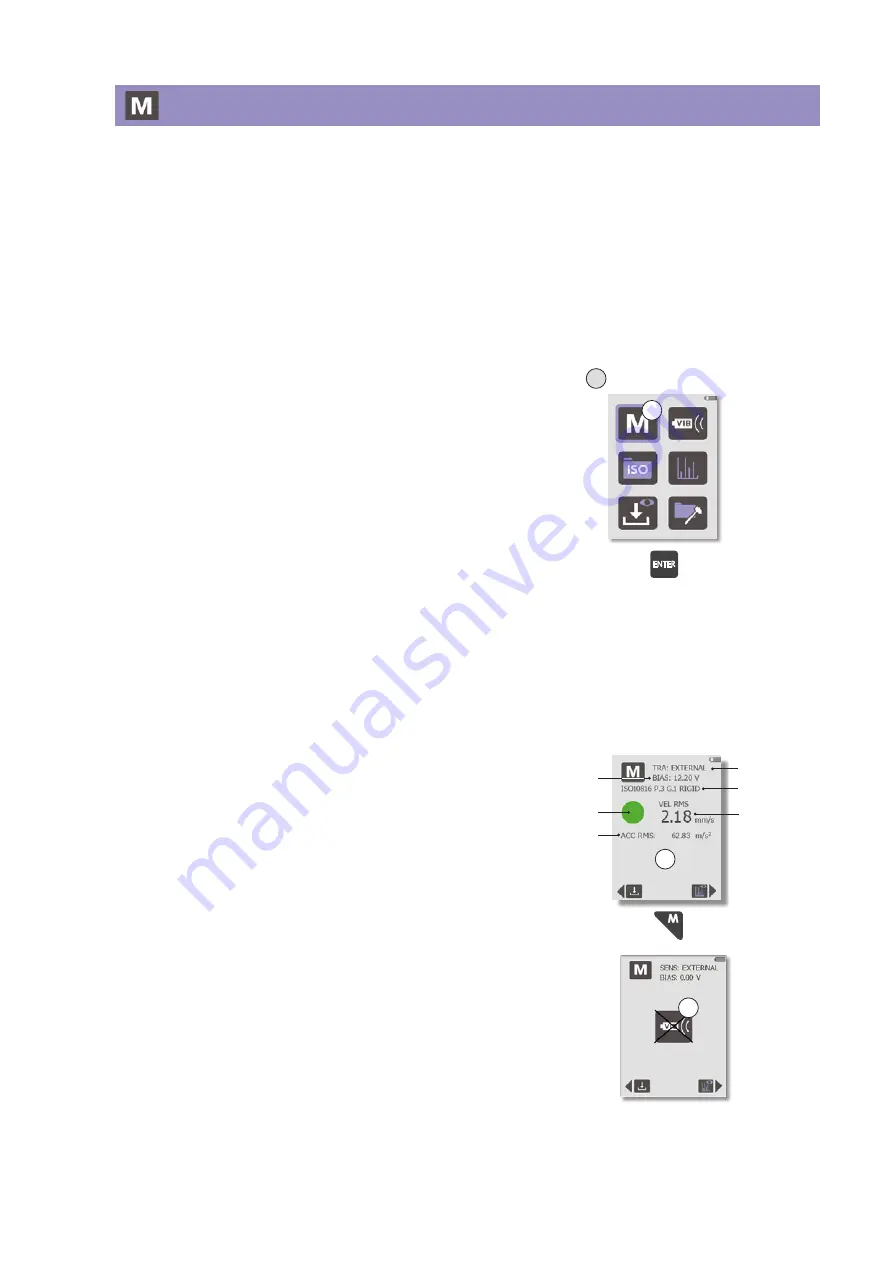
21
For all VibChecker versions, measurement is started
manually from the
Measurement
display, which is
opened by pressing the
MEASURE
key from anywhere
in the menu structure.
If the instrument is on and the backlight is off, nothing
happens at first keypress, except that the backlight comes
on. Next keypress will perform the intended action.
Before measurement, make sure that ISO standard, sen-
sor settings, units etc. are set up.
To perform a vibration measurement:
1. In the
Main
display (A), select the
Measure
icon (B)
and press
ENTER
. The
Measurement
display opens,
showing the most recent reading.
2. For a new measurement, point the VibChecker
straight at the measuring point and press the probe
tip until the rubber sleeve is in contact with the
surface (or connect the external sensor).
3. Hold the instrument steady and press the
MEASURE
key to start measurement. A single blue pixel briefly
appears at the bottom of the display, indicating that
a measurement cycle - beginning with an automatic
bias check - is in progress. The display backlight is
then turned off until the measurement is completed.
When using an external sensor, the actual measuring
starts when the defined settling time has elapsed.
As long as the
Measurement
display is still selected
and the backlight is on, no new settling time is
needed to make further measurements, unless you
switch to using the built-in measuring probe.
4. When the display lights up again, it shows the
measurement result according to the settings made
in the instrument (C). The result is shown in large
numbers, with alternative values (RMS, peak, and
peak-to-peak, depending on the selected vibration
quantity) shown in small numbers below. Depend-
ing on vibration severity (and provided that an ISO
standard was selected), the display shows a green,
yellow or red condition indicator.
When an external sensor is used, the instrument dis-
plays the bias voltage level for the current reading in
the upper part of the display. If the reading was made
with a poor sensor line, the instrument will display
Bias error (D). For further information about bias
problems, please see the “Bias voltage” section.
To return to the
Main
display, press the
BACK
key.
For information on how to store and analyze meas-
urement results, see sections ‘Storing measurement
results’ and ‘Spectrum analysis’, respectively.
Measurement
Condition
status
ISO settings
Alternative
value(s)
Measure-
ment value
Bias voltage
Sensor type
C
A Main display
B
D
Summary of Contents for VibChecker
Page 4: ...2 ...





























